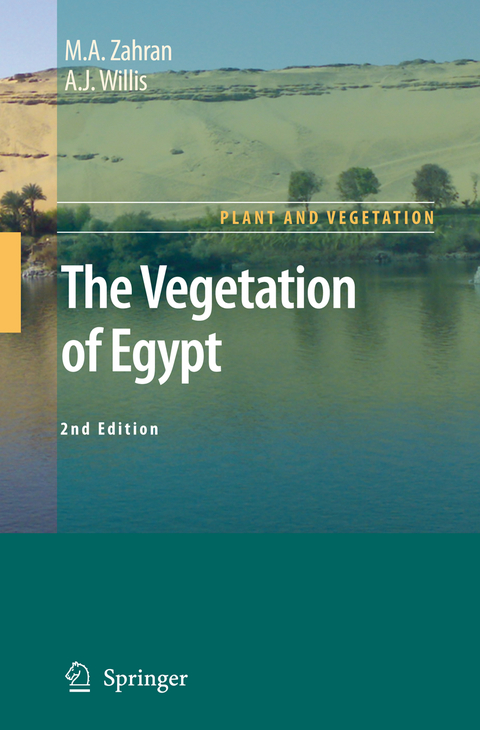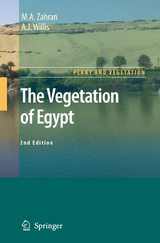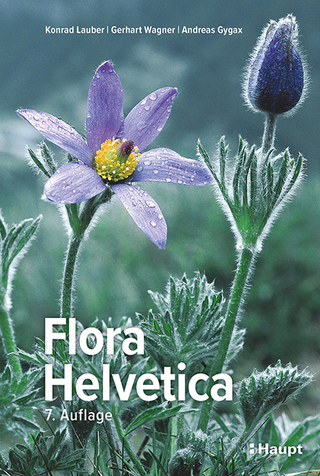The Vegetation of Egypt
Springer-Verlag New York Inc.
978-1-4020-8755-4 (ISBN)
This book is an attempt to compile and integrate the information documented by many botanists, both Egyptians and others, about the vegetation of Egypt. The ? rst treatise on the ? ora of Egypt, by Petrus Forsskal, was published in 1775. Records of the Egyptian ? ora made during the Napoleonic expedition to Egypt (1778–1801) were provided by A. R. Delile from 1809 to 1812 (Kassas, 1981). The early beginning of ecological studies of the vegetation of Egypt extended to the mid-nineteenth century. Two traditions may be recognized. The ? rst was general exploration and survey, for which one name is symbolic: Georges-Auguste Schweinfurth (1836–1925), a German scientist and explorer who lived in Egypt from 1863 to 1914. The second tradition was ecophysiological to explain the plant life in the dry desert. The work of G. Volkens (1887) remains a classic on xeroph- ism. These two traditions were maintained and expanded in further phases of e- logical development associated with the establishment of the Egyptian University in 1925 (now the University of Cairo). The ? rst professor of botany was the Swedish Gunnar Tackholm (1925–1929). He died young, and his wife Vivi Tackholm devoted her life to studying the ? ora of Egypt and gave leadership and inspiration to plant taxonomists and plant ecologists in Egypt for some 50 years. She died in 1978. The second professor of botany in Egypt was F. W.
1. Egypt: the gift of the Nile.- 2. Physiography, climate and soil-vegetation relationships. 2.1 Geological characteristics. 2.2 Geographical characteristics. 2.3 The climate of Egypt. 2.4. Soil-vegetation relationships.- 3. The Western Desert. 3.1 General features. 3.2 The western Mediterranean coastal belt. 3.3 The oases and depressions. 3.4 Gebel Uweinat. 3.5 The Gilf Kebir.- 4. The Eastern Desert. 4.1 Geology and geomorphology. 4.2 Ecological characteristics.- 5. The Sinai Peninsula. 5.1 Geomorphology. 5.2 Climate. 5.3 Water resources. 5.4 The vegetation.- 6. The Nile region. 6.1 Geomorphology. 6.2 Climate. 6.3 Vegetation types.- 7. The history of the vegetation: its salient features and future study. 7.1 The history of the vegetation. 7.2 Future study of phytosociology and plant ecology. 7.3 The main types of vegetation and its features: synopsis.- 8. Remote sensing and vegetation map of Egypt.- 9. Sustainable development of Egypt’s deserts.- Appendix. References. Species Index.- Subject Index.
| Erscheint lt. Verlag | 2.12.2008 |
|---|---|
| Reihe/Serie | Plant and Vegetation ; 2 |
| Zusatzinfo | XIX, 437 p. |
| Verlagsort | New York, NY |
| Sprache | englisch |
| Maße | 155 x 235 mm |
| Themenwelt | Naturwissenschaften ► Biologie ► Botanik |
| Naturwissenschaften ► Biologie ► Ökologie / Naturschutz | |
| Naturwissenschaften ► Biologie ► Zoologie | |
| ISBN-10 | 1-4020-8755-1 / 1402087551 |
| ISBN-13 | 978-1-4020-8755-4 / 9781402087554 |
| Zustand | Neuware |
| Haben Sie eine Frage zum Produkt? |
aus dem Bereich




